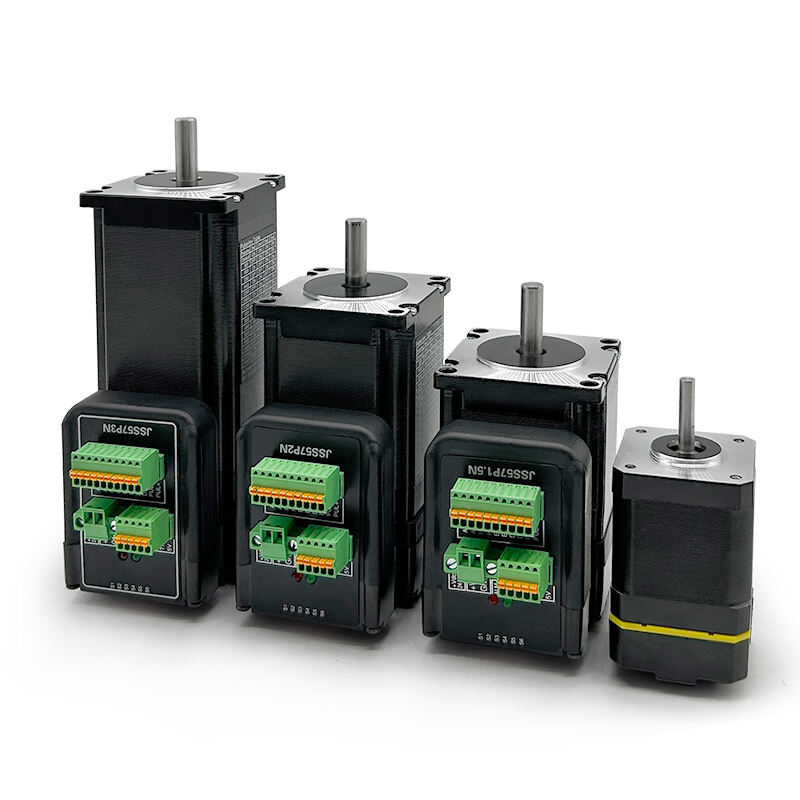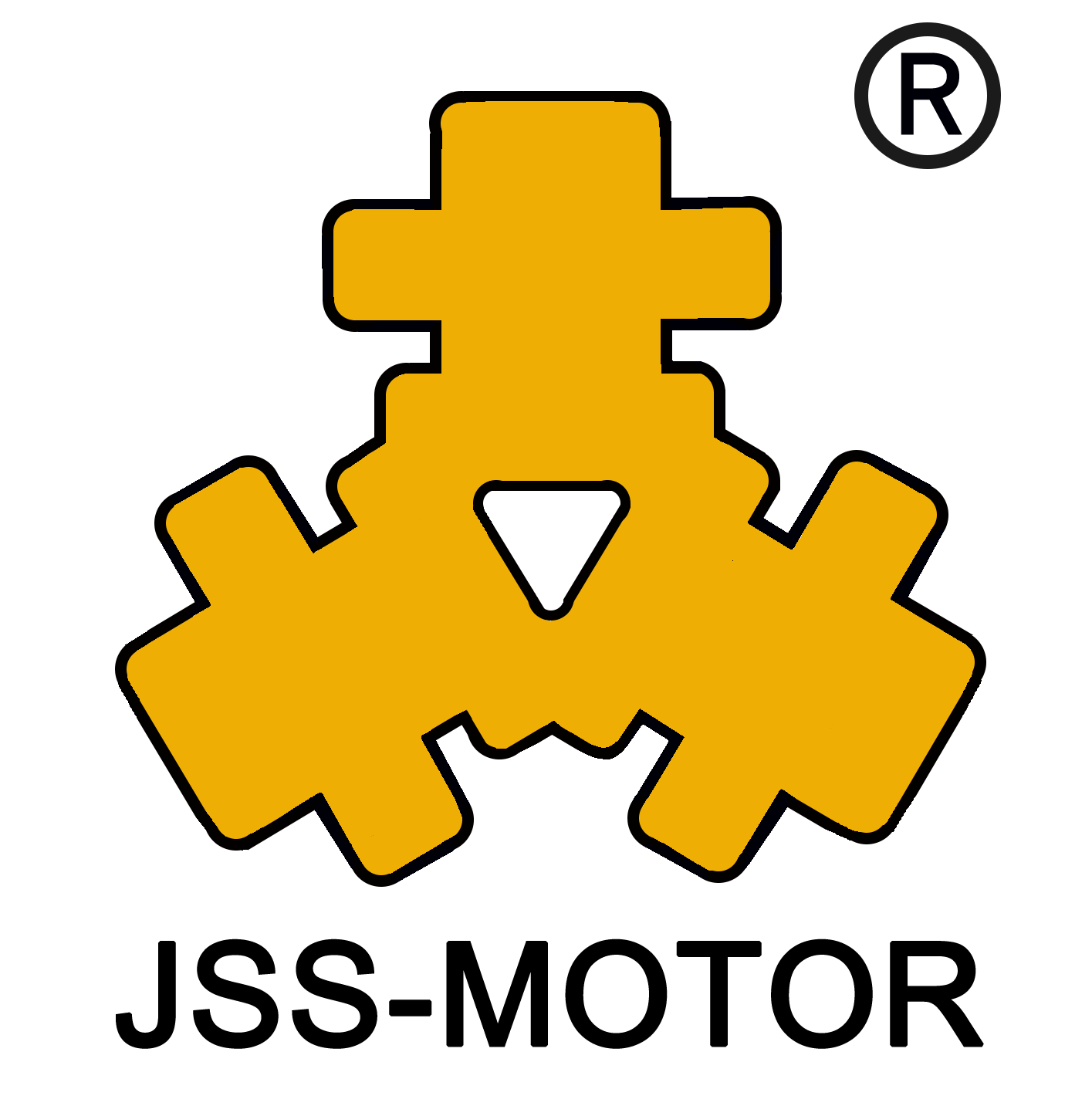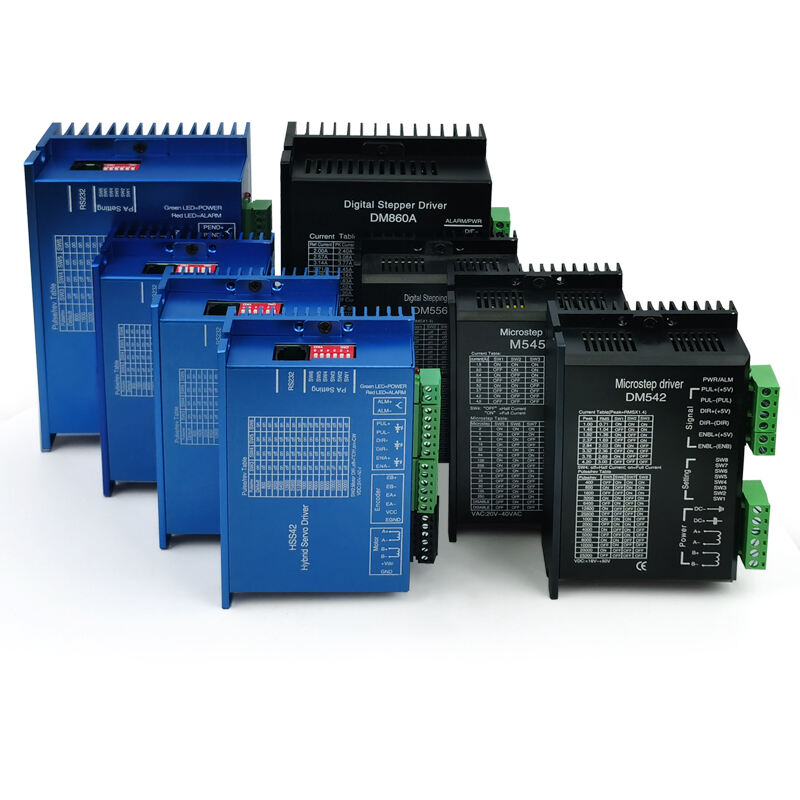Quali sono le ultime novità nella tecnologia dei driver per motori passo-passo?
Introduzione alla tecnologia dei driver per motori passo-passo
La motore passo a passo è un componente fondamentale nei sistemi di controllo del movimento, incaricato di convertire i segnali di controllo provenienti da un microcontrollore o da un controllore di movimento in impulsi elettrici precisi che azionano un motore passo-passo. Gestendo corrente, tensione, sequenza dei passi e parametri del movimento, il driver determina in che misura il motore eroga coppia, velocità e precisione. Nel corso degli anni, motore passo a passo la tecnologia è avanzata notevolmente, superando il semplice controllo della corrente e passando a sistemi intelligenti in grado di effettuare un controllo adattivo, monitoraggio in tempo reale e integrazione con reti di automazione industriale. Queste innovazioni stanno ridefinendo l'utilizzo dei motori passo in settori come robotica, stampa 3D, macchine a controllo numerico (CNC), dispositivi medici e automazione industriale.
Evoluzione dei driver per motori passo
Prime generazioni
I primi design dei driver per motori passo erano relativamente semplici, offrendo modalità full-step o half-step di base con una regolazione limitata della corrente. Sebbene questi driver iniziali fossero sufficienti per compiti di automazione elementari, tendevano a provocare vibrazioni, risonanza e mancati passi alle velocità più alte.
Progressi nel controllo della corrente
Lo sviluppo dei driver chopper ha introdotto una regolazione costante della corrente, permettendo ai motori di raggiungere prestazioni superiori in termini di coppia e velocità. Questa innovazione ha segnato un punto di svolta, rendendo i motori passo utilizzabili per applicazioni più impegnative.
L'ascesa del microstepping
I driver a microstepping hanno ulteriormente migliorato le prestazioni dividendo ogni passo in incrementi più piccoli. Questo ha notevolmente migliorato la fluidità, ridotto le vibrazioni e aumentato la risoluzione. Il microstepping è diventata una caratteristica standard nella moderna tecnologia dei driver per motori passo-passo, permettendo applicazioni che richiedono alta precisione.
Ultime innovazioni nella tecnologia dei driver per motori passo-passo
Controllo intelligente integrato
Una delle innovazioni più significative è l'integrazione di sistemi di controllo intelligenti all'interno del driver per motore passo-passo. Questi driver dispongono di microcontrollori o processori di segnale digitale (DSP) integrati in grado di gestire funzioni avanzate come la pianificazione della traiettoria, il controllo dell'accelerazione e l'ottimizzazione della coppia. Questo riduce la dipendenza da controller esterni e semplifica l'architettura del sistema.
Driver per motori passo-passo a ciclo chiuso
I motori passo-passo tradizionali funzionano in modalità ad anello aperto, il che significa che eseguono i comandi senza ricevere alcun feedback per confermare l'accuratezza. La più recente tecnologia di piloti per motori passo-passo integra sistemi ad anello chiuso che utilizzano encoder o sensori per fornire un feedback in tempo reale. Questo approccio ibrido tra motore passo-passo e servo elimina il rischio di perdita di passi, aumenta l'efficienza della coppia e consente velocità più elevate riducendo il calore e il consumo di energia.
Controllo Adattivo della Corrente
I moderni driver per motori passo-passo utilizzano una regolazione adattiva della corrente, regolando dinamicamente la corrente in base alle condizioni di carico. Questo impedisce un consumo inutile di energia quando il carico è ridotto e garantisce una coppia sufficiente quando il carico aumenta. Il controllo adattivo riduce le perdite di potenza, minimizza l'accumulo di calore e prolunga la vita utile del motore e del driver.

Algoritmi Avanzati Antirisuonanza
La risonanza è da tempo una sfida nelle applicazioni con motori passo-passo, causando vibrazioni, rumore e perdita di coppia. Le moderne soluzioni di pilotaggio per motori passo-passo integrano algoritmi digitali anti-risonanza che rilevano e sopprimono automaticamente le frequenze di risonanza. Questo garantisce un movimento più fluido nell'intero intervallo di velocità del motore e amplia le curve di coppia-velocità utilizzabili.
Rilevamento Senza Sensori della Condizione di Stallo
Le nuove tecnologie di pilotaggio per motori passo-passo offrono il rilevamento senza sensori della condizione di stallo, permettendo al driver di identificare quando il motore va in stallo o perde sincronizzazione, senza richiedere un encoder. Questa funzionalità migliora l'affidabilità e riduce i costi del sistema eliminando la necessità di hardware esterno di feedback in alcune applicazioni.
Tensioni e Correnti Nominali Più Elevate
I progressi nella progettazione dei semiconduttori hanno permesso di realizzare driver in grado di gestire tensioni e correnti più elevate senza compromettere l'efficienza. Questi miglioramenti consentono ai motori passo-passo di mantenere la coppia a velocità più elevate, rendendoli più adatti per applicazioni industriali e automobilistiche impegnative.
Modalità inattive energeticamente efficienti
Per migliorare l'efficienza energetica, molti driver per motori passo-passo dispongono ora di una riduzione intelligente della corrente in standby. Una volta che il motore ha raggiunto la posizione desiderata e non richiede più la coppia massima, il driver riduce automaticamente la corrente di mantenimento, diminuendo il consumo di energia e riducendo la generazione di calore.
Interfacce di comunicazione integrate
Un altro importante progresso riguarda l'integrazione di protocolli di comunicazione moderni come il bus CAN, RS-485, EtherCAT e in alcuni modelli di driver per motori passo-passo anche Ethernet. Queste interfacce permettono un'integrazione senza soluzione di continuità nelle reti industriali, il monitoraggio in tempo reale dei dati e una più facile sincronizzazione con altri sistemi di automazione.
Miniaturizzazione e driver System-on-Chip
La tendenza alla miniaturizzazione ha portato a soluzioni compatte per i driver dei motori passo-passo che integrano tutta l'elettronica necessaria in un unico chip. Questi driver system-on-chip sono ideali per l'elettronica di consumo, dispositivi portatili e robot compatti, dove lo spazio è limitato ma è comunque richiesto un controllo preciso del movimento.
Miglioramento della gestione termica
I nuovi driver per motori passo-passo sono progettati con un migliorato sistema di gestione termica, inclusi transistor di potenza più efficienti, materiali avanzati per l'involucro e sensori termici integrati. Questo consente loro di operare in modo affidabile in ambienti ad alta temperatura e sotto carichi continui elevati.
Intelligenza Artificiale e Manutenzione Predittiva
Le tecnologie all'avanguardia per i driver dei motori passo-passo stanno iniziando a utilizzare l'intelligenza artificiale e il machine learning. Monitorando parametri di funzionamento del motore, come corrente, tensione e vibrazioni, i driver abilitati all'AI possono prevedere guasti potenziali, suggerire interventi di manutenzione e regolare automaticamente i parametri per ottimizzare le prestazioni in tempo reale.
Applicazioni che beneficiano dei moderni driver per motori passo-passo
stampa 3D
I moderni driver per motori passo-passo con funzionalità di microstep, soppressione delle risonanze e controllo in loop chiuso sono fondamentali nelle stampanti 3D. Garantiscono un posizionamento preciso degli strati, un funzionamento silenzioso e una qualità di estrusione costante, ottenendo così una maggiore precisione e affidabilità nelle stampe.
Macchinari CNC
Nei macchinari CNC, la precisione e il controllo della coppia sono essenziali. I driver avanzati per motori passo-passo offrono un movimento più fluido, tempi di risposta più rapidi e la capacità di gestire carichi di taglio più pesanti senza perdere sincronizzazione.
Robotica
Le applicazioni di robotica beneficiano notevolmente dei driver intelligenti per motori passo-passo, in particolare di quelli con controllo adattivo della corrente e sistemi in loop chiuso. Queste caratteristiche permettono ai robot di operare in modo più efficiente mantenendo la precisione in ambienti dinamici.
Dispositivi medici
Le attrezzature mediche come macchine per immagini, pompe per infusione e robot chirurgici dipendono da driver per motori passo-passo con alta precisione, affidabilità e funzionamento silenzioso. Driver avanzati con sistemi di feedback migliorano sicurezza e prestazioni nelle applicazioni mediche sensibili.
Automazione industriale
Le fabbriche sempre più dipendono da sistemi di automazione che richiedono motori affidabili ed efficienti dal punto di vista energetico. Driver per motori passo-passo con interfacce di comunicazione avanzate e capacità di manutenzione predittiva si integrano perfettamente negli ambienti Industry 4.0.
Tendenze future nello sviluppo dei driver per motori passo-passo
Con l'aumentare della domanda di automazione più intelligente ed efficiente, la tecnologia dei driver per motori passo continuerà a evolversi. Le tendenze future includono un'integrazione ancora più profonda dell'intelligenza artificiale per l'ottimizzazione in tempo reale, un maggiore utilizzo della comunicazione wireless per il controllo distribuito e ulteriori miglioramenti nell'efficienza energetica. Sistemi ibridi che combinano la precisione dei motori passo con il feedback e la densità di coppia dei servoazionamenti diventeranno sempre più comuni, colmando il divario tra la tradizionale tecnologia dei motori passo e dei servoazionamenti. Inoltre, soluzioni ecocompatibili mirate alla riduzione del consumo energetico e all'utilizzo di materiali riciclabili acquisiranno rilevanza nelle pratiche di produzione sostenibile.
Conclusione
Il driver del motore passo-passo ha percorso una lunga strada rispetto ai suoi primi design, evolvendosi in un dispositivo sofisticato che non solo controlla il movimento del motore, ma ottimizza anche le prestazioni, l'efficienza energetica e l'affidabilità del sistema. Le ultime innovazioni includono il controllo in loop chiuso, la regolazione adattiva della corrente, algoritmi anti-risonanza, rilevamento senza sensori di stallo, interfacce di comunicazione integrate e manutenzione predittiva basata sull'intelligenza artificiale. Queste innovazioni ampliano il range di applicazioni dei motori passo-passo, rendendoli più competitivi rispetto ai servo, mantenendo al contempo i loro vantaggi in termini di costo e semplicità. Con il crescere delle richieste industriali di automazione più intelligente ed efficiente, l'evoluzione della tecnologia dei driver per motori passo-passo giocherà un ruolo centrale nel plasmare il futuro del controllo del movimento.
Domande Frequenti
Qual è il più grande progresso nella tecnologia dei driver per motori passo-passo?
L'integrazione del controllo a ciclo chiuso con encoder è uno dei progressi più importanti, in quanto elimina i passi mancati e migliora l'efficienza.
Come fanno i moderni piloti a ridurre il risonanza nei motori passo-passo?
Utilizzano avanzati algoritmi anti-risonanza che rilevano automaticamente e contrastano le frequenze di vibrazione, garantendo un movimento più fluido.
Cos'è il rilevamento del blocco senza sensore in un driver di motore passo-passo?
È una funzione che permette al driver di rilevare quando il motore si blocca o perde sincronizzazione senza richiedere un encoder esterno.
Perché il controllo adattivo della corrente è importante?
Regola dinamicamente la corrente in base al carico, riducendo il consumo energetico, minimizzando il calore e prolungando la vita dei componenti.
I driver per motori passo-passo possono integrarsi con le reti industriali?
Sì, molti driver moderni supportano protocolli di comunicazione come CAN bus, RS-485 ed EtherCAT, permettendo un'integrazione perfetta con i sistemi di automazione.
Come fanno i driver avanzati a migliorare l'efficienza energetica?
Comprendono funzionalità per la riduzione della corrente a riposo, garantendo che una volta raggiunta la posizione desiderata del motore, la corrente venga ridotta per risparmiare energia.
I driver per motori passo stanno diventando più piccoli?
Sì, i driver miniaturizzati basati su sistema-on-chip integrano tutte le funzioni di controllo in pacchetti compatti, adatti per applicazioni portatili e con limitazioni di spazio.
Come viene utilizzato l'intelligenza artificiale nei driver per motori passo?
L'intelligenza artificiale permette la manutenzione predittiva monitorando i dati delle prestazioni e apportando aggiustamenti in tempo reale per ottimizzare l'efficienza e prevenire guasti.
Quali settori beneficiano maggiormente dei driver avanzati per motori passo?
Settori come la stampa 3D, la lavorazione CNC, la robotica, l'equipaggiamento medico e l'automazione industriale beneficiano notevolmente delle moderne funzionalità dei driver.
Qual è il futuro della tecnologia dei driver per motori passo?
I driver del futuro integreranno in modo più approfondito l'intelligenza artificiale, supporteranno la comunicazione wireless, si concentreranno sulla sostenibilità e uniranno la precisione dei motori passo a un feedback simile a quello dei servo per soluzioni ibride.
Indice
- Introduzione alla tecnologia dei driver per motori passo-passo
- Evoluzione dei driver per motori passo
-
Ultime innovazioni nella tecnologia dei driver per motori passo-passo
- Controllo intelligente integrato
- Driver per motori passo-passo a ciclo chiuso
- Controllo Adattivo della Corrente
- Algoritmi Avanzati Antirisuonanza
- Rilevamento Senza Sensori della Condizione di Stallo
- Tensioni e Correnti Nominali Più Elevate
- Modalità inattive energeticamente efficienti
- Interfacce di comunicazione integrate
- Miniaturizzazione e driver System-on-Chip
- Miglioramento della gestione termica
- Intelligenza Artificiale e Manutenzione Predittiva
- Applicazioni che beneficiano dei moderni driver per motori passo-passo
- Tendenze future nello sviluppo dei driver per motori passo-passo
- Conclusione
-
Domande Frequenti
- Qual è il più grande progresso nella tecnologia dei driver per motori passo-passo?
- Come fanno i moderni piloti a ridurre il risonanza nei motori passo-passo?
- Cos'è il rilevamento del blocco senza sensore in un driver di motore passo-passo?
- Perché il controllo adattivo della corrente è importante?
- I driver per motori passo-passo possono integrarsi con le reti industriali?
- Come fanno i driver avanzati a migliorare l'efficienza energetica?
- I driver per motori passo stanno diventando più piccoli?
- Come viene utilizzato l'intelligenza artificiale nei driver per motori passo?
- Quali settori beneficiano maggiormente dei driver avanzati per motori passo?
- Qual è il futuro della tecnologia dei driver per motori passo?

